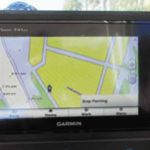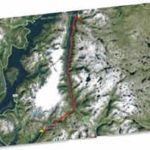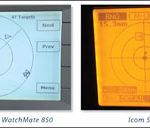Home Search
sunglasses - search results
If you're not happy with the results, please do another search
Garmin 741xs Goes Wireless
Planned obsolescence is probably the most irksome way to keep manufacturing costs down and inspire us to buy stuff. Each time a new or updated line of multi-function devices appear, we ask ourselves if the new version represents real value, or are the engineers just adding another tower to their Lego castle, while the marketing folks ponder adding an umlaut or X to the product name.
Bad Elf GPS Pro Boosts iPad Nav Apps
Looking to add GPS functions to WiFi Apple devices or increase the GPS accuracy of a Bluetooth device? U.S. company Bad Elf created the GPS Pro, an external Bluetooth wireless GPS receiver and data logger, to simultaneously share GPS data with Bluetooth-capable i-devices, including the iPhone, iPod Touch, and iPad. It also can serve as a standalone data logger that allows you to record up to 100 hours of trip location data.
Mailport: December 2013
Your tape test (PS, October 2013) did not include 3M 256, but I thought Id pass on a lesson learned to your readers. Having recently completed painting my deck, for the first time in 37 years, I encountered an unforeseen problem.
Comparing Class B AIS Transceivers
The popularity of Automatic Identification Systems (AIS) has grown exponentially in recent years. Lower costs have played a big hand in this; however, the primary driver remains boat owners looking to increase safety. Our latest evaluation compared Class B transceivers from two key players in the AIS market. From Icom, we tested the MA-500TR. New Zealand-based Vesper Marine submitted its WatchMate 850 for testing. We rated the products on AIS functions, control capabilities, user-interface, filtering capability, display quality, and screen visibility.
All is Lost and Found
A photographer friend stumbled upon this photo of my wife, Theresa, from our cruising days. It was taken in Fiji around 1995. She doesn't usually look this serious; it probably had something to do with having two guests on board a cramped 32-foot Atkin ketch for a couple of weeks. I thought the image illustrated well something that Ive been thinking about lately: the value of resourcefulness while cruising. This notion of the self-sufficient sailor came to mind most recently while watching the movie trailer for All is Lost, in which a single-handed sailor (played by Robert Redford) tries to keep his beloved Cal 29 afloat.
Keep Your Lid On
Whats the best sailing hat? Testers set out to find a wide-brimmed sailing hat that offers lots of sun protection, even in a blow, and is breathable, lightweight, and durable. The review included 14 hats from Tilley, Columbia, Sunday Afternoons, Outdoor Research, and Gill.
Touchscreen plotter-sounder test: Simrad NSS7 vs. Raymarine e7D
Practical Sailor recently had the opportunity to take a long-term look at the Simrad NSS7 multi-function display from Navico, and we compared it to a similar unit from Raymarine, the e7D. The test focused on the same elements as our past reviews of the Garmin 740s and Ray e7D chartplotter-sounders: installation, screen visibility, environmental tests, and plotter and sounder functions.
Raymarine e7 vs. Garmin 740s plotter-sounders
Practical Sailor evaluated the Garmin 740s chartplotter-sounder and other similar sized plotter-sounders in the November 2011 issue. For this follow-up report, we took a close look at the new Raymarine e7D. The Garmin 740s and the Ray e7D are similar in size, and both have a baseline plotter with sounder functionality, but the e7D has many new capabilities that include WiFi and Bluetooth interfaces witth mobile computing devices such as iPads and iPhones. The e7D is also capable of being fully networked with the other members of the new Raymarine chartplotter family and the C- and E-series widescreen units, while the Garmin 740s was designed as a standalone, multi-function display system.
The Man Who Glued Too Much
When PS Technical Editor Ralph Naranjo told me he was interested in doing a report on epoxy, I was thrilled. Ralph ran a boatyard for 10 years on Long Island Sound and is mad about glues and fibers and anything that has to do with building boats. I had one small concern: The project could spiral.
PS Reviews Cheap and Free iPad Navigation Apps
This article is the second part of three-part series on marine-related iPad applications. Our first part covered the high-end nav apps, while this one looks at relatively inexpensive or free apps. Over the course of three years in the Great Lakes and Florida, sailors put to the test a dozen applications that convert iPads into portable-although less robust-chartplotters. Testers used each one to carry out a series of navigation tasks, evaluating performance and available features. The third part of the series, which will be in next months issue, will look at weather, tide, and other sailing-relative apps.









































